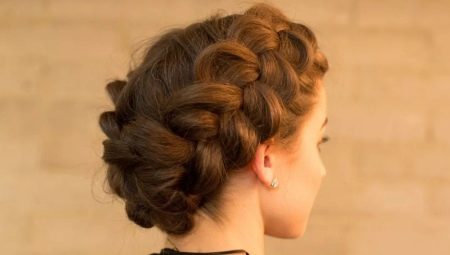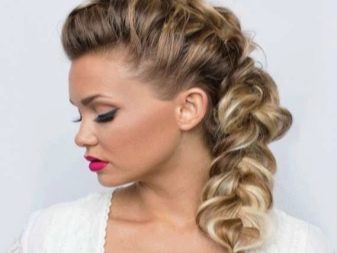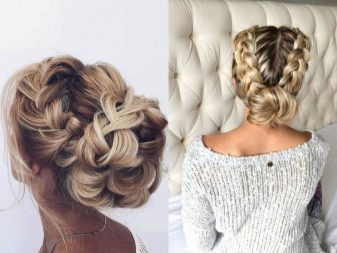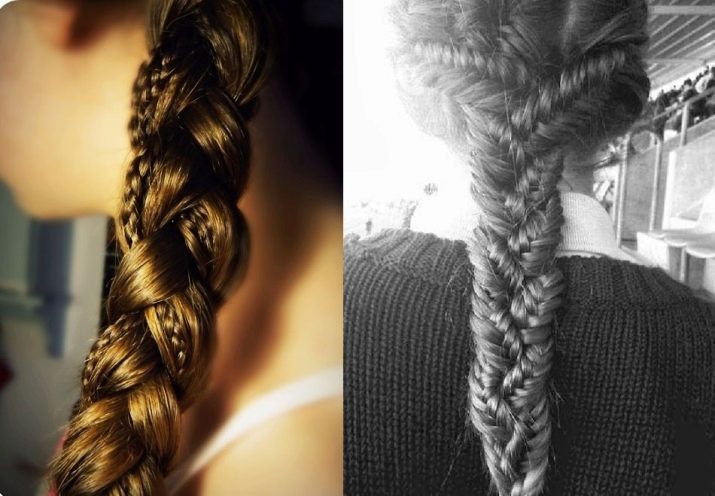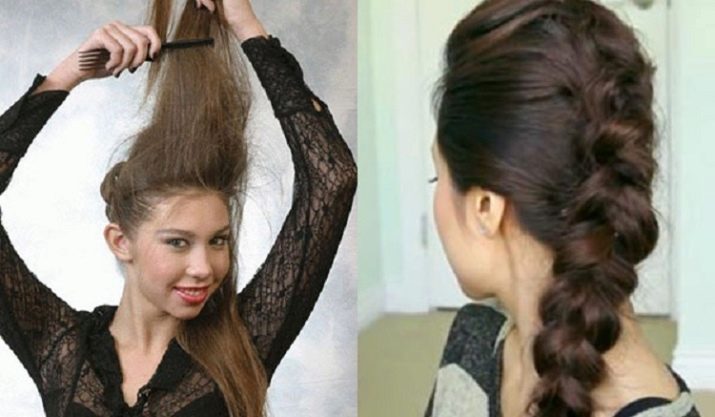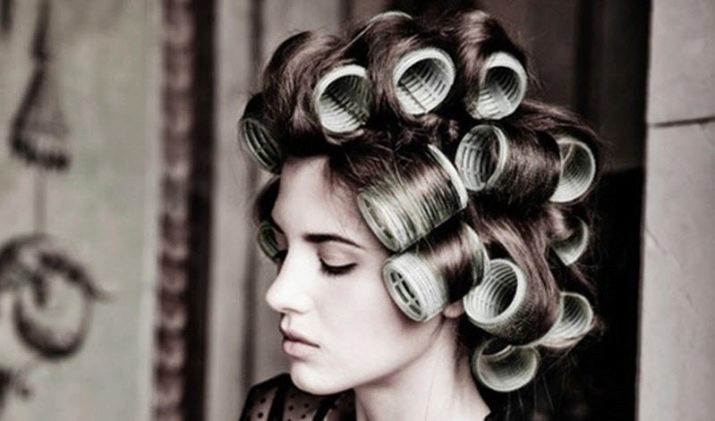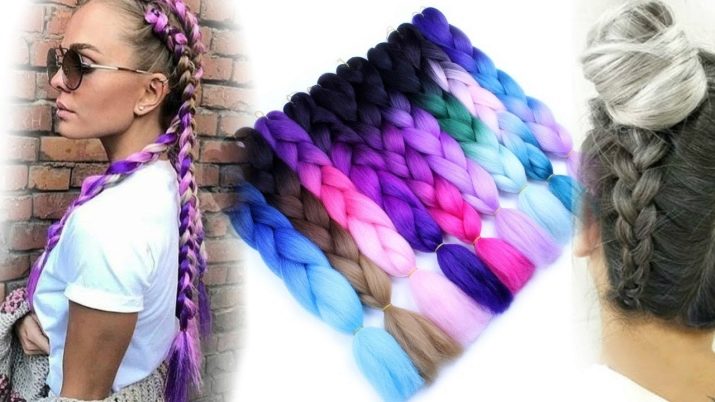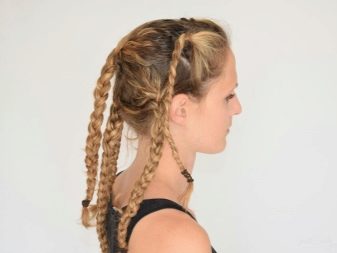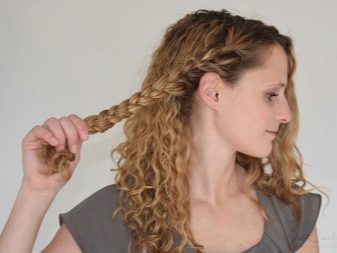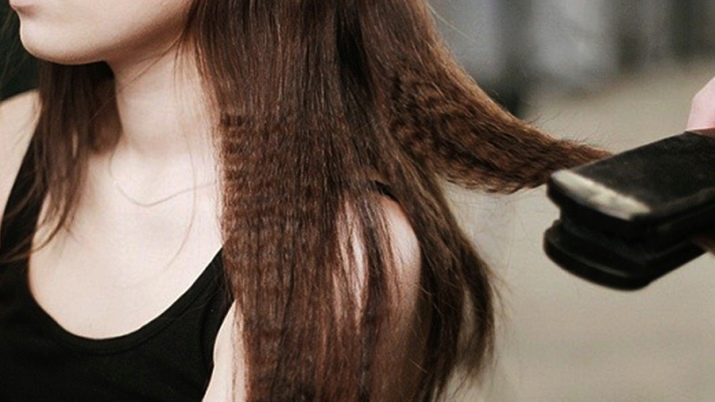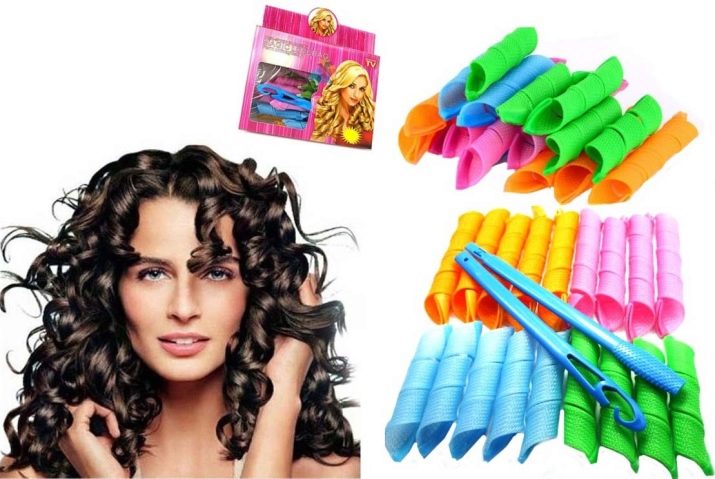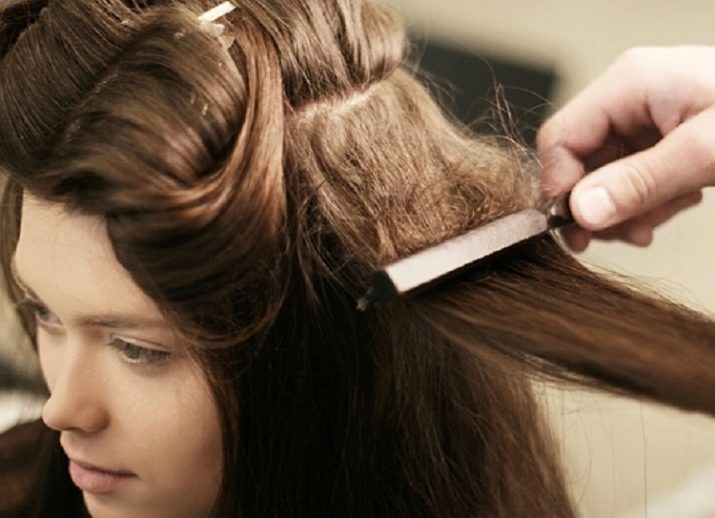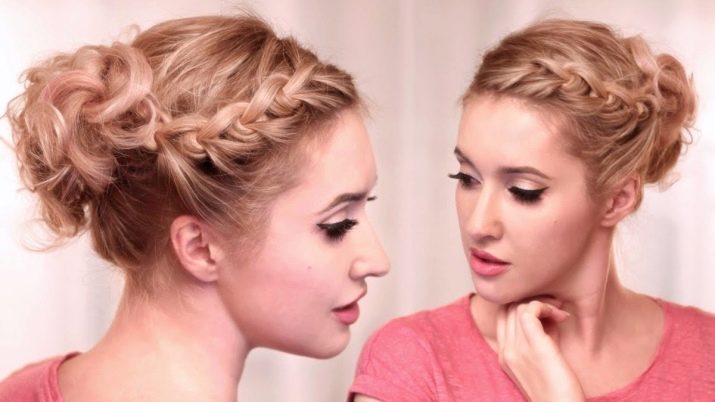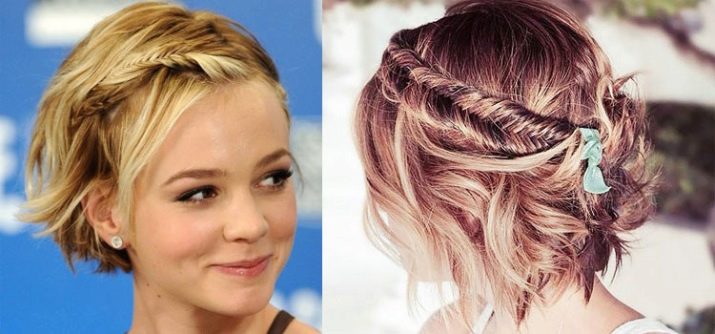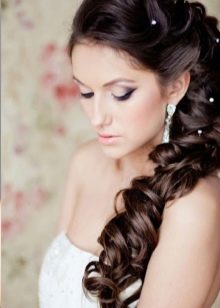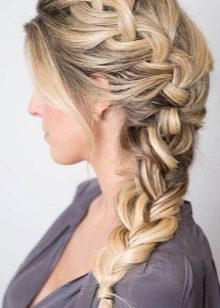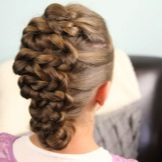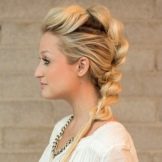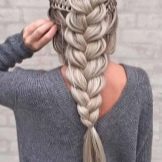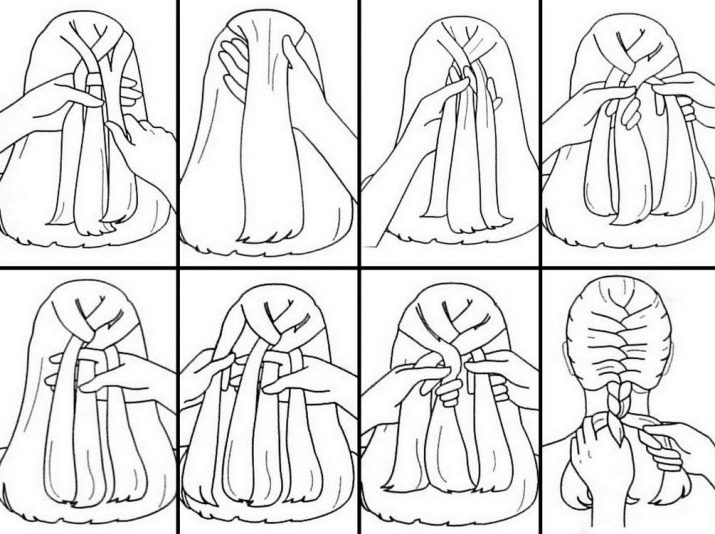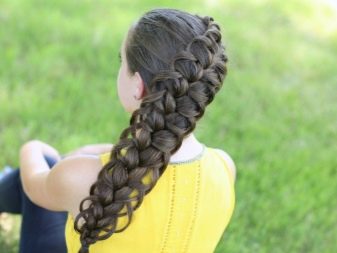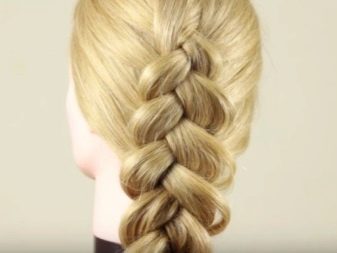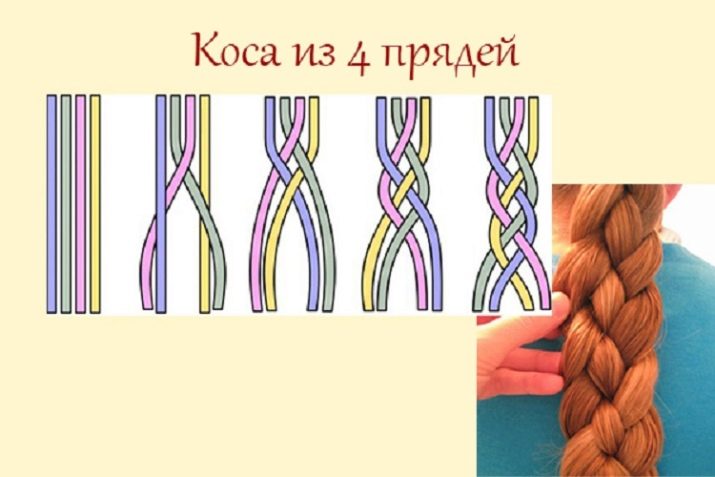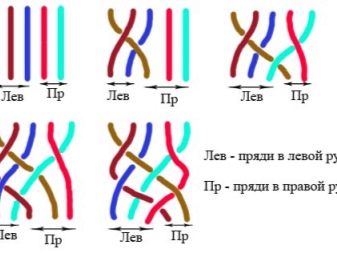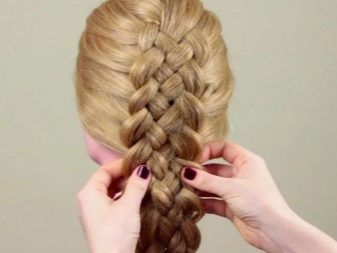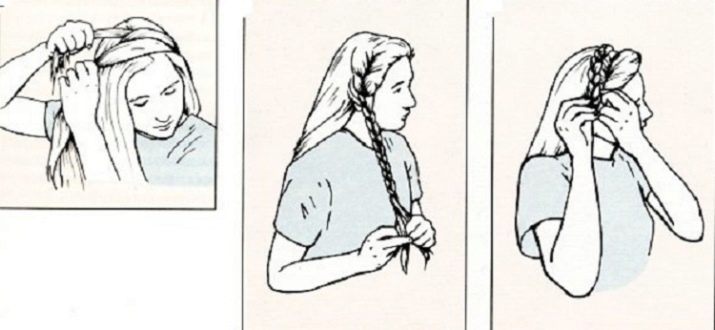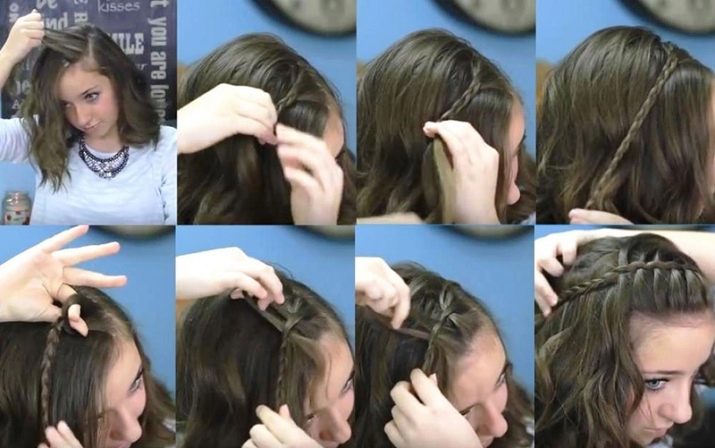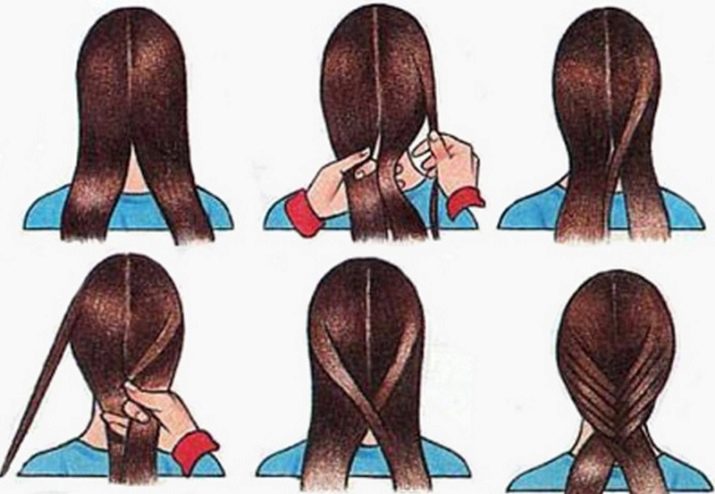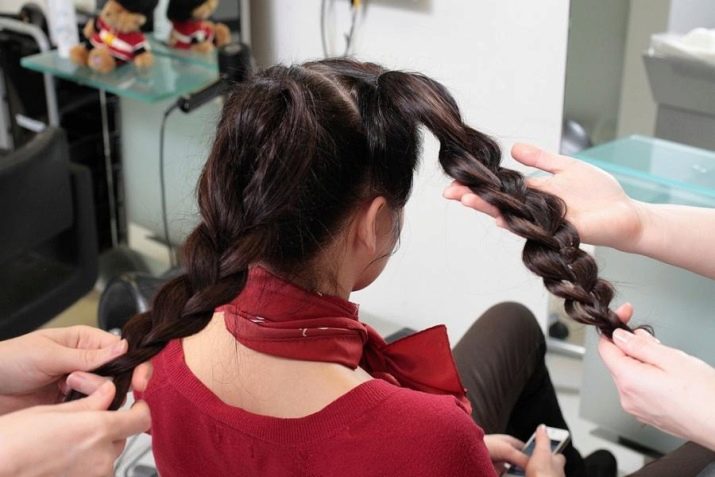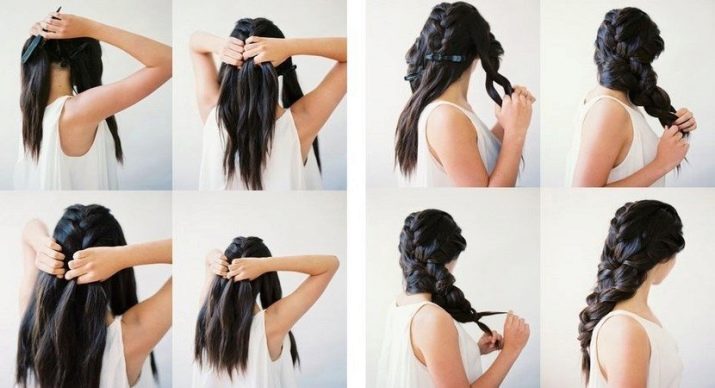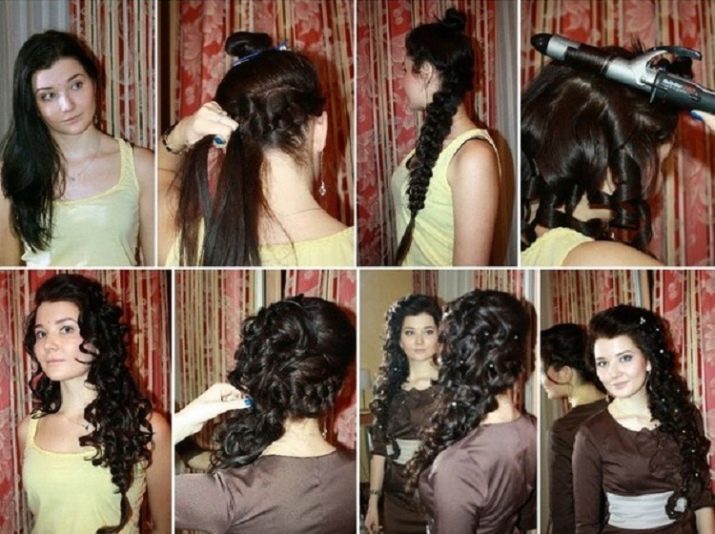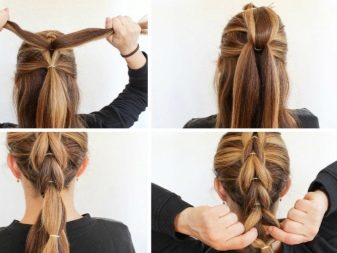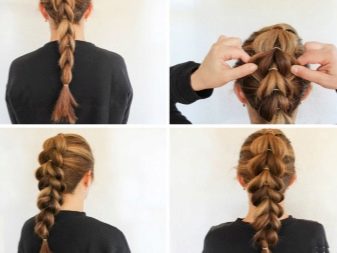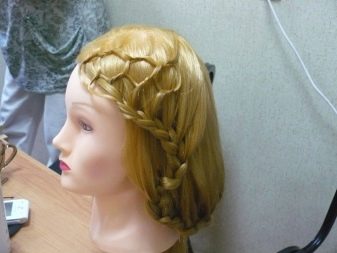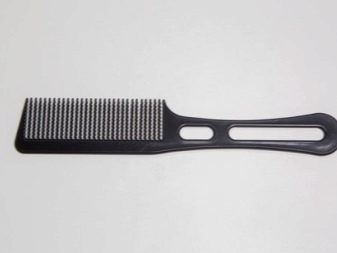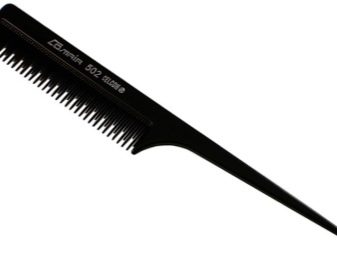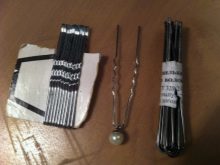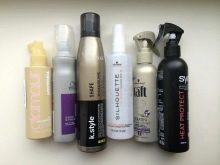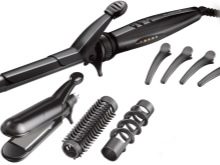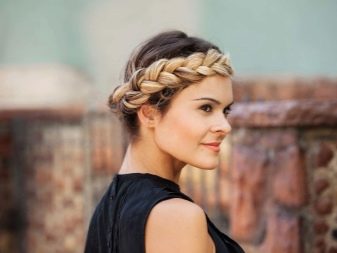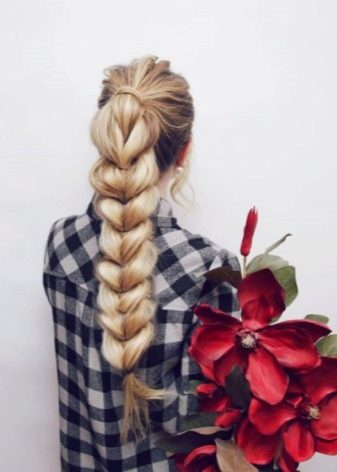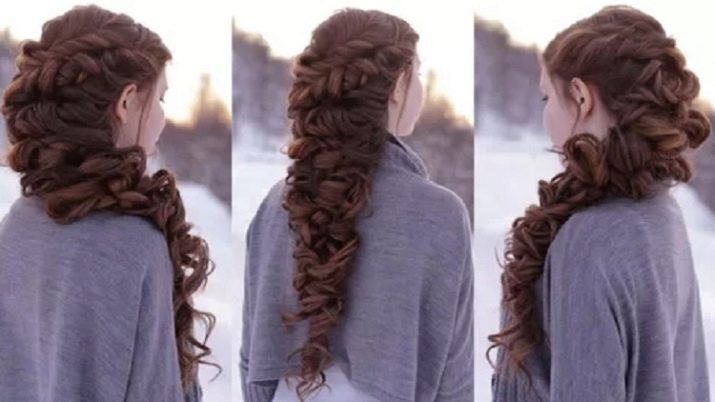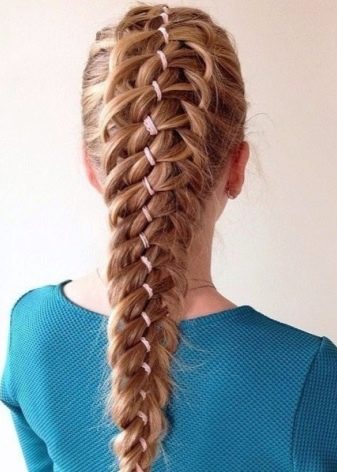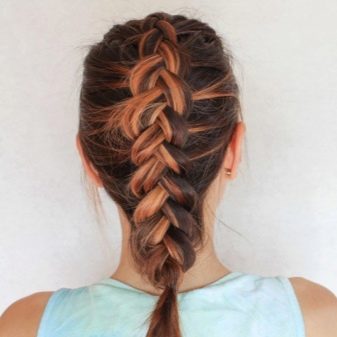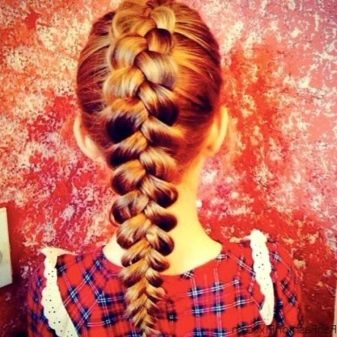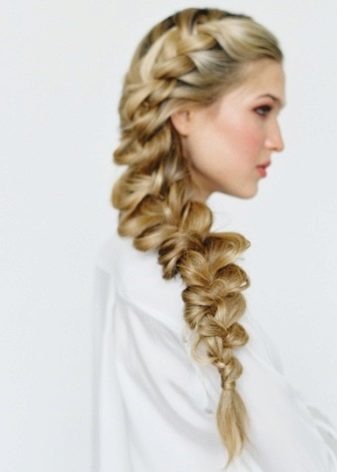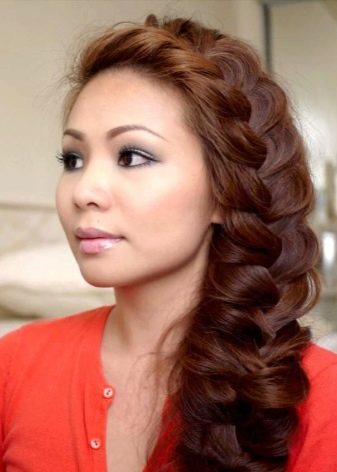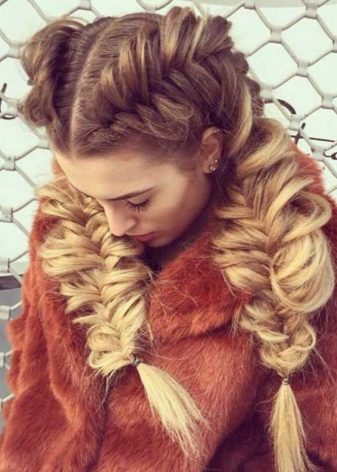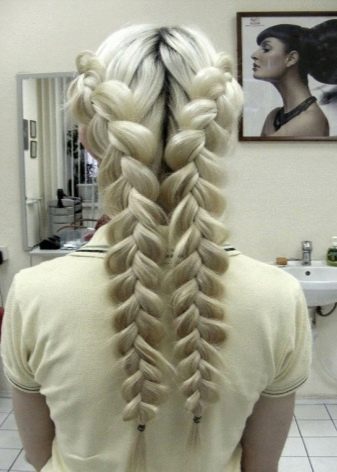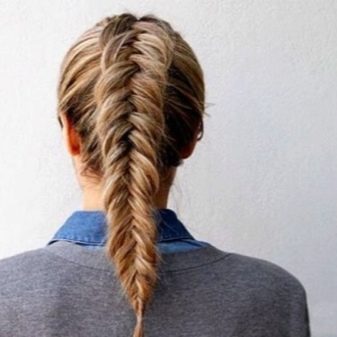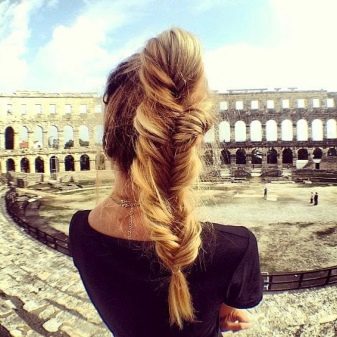Long and medium length strands allow you to braid them in many different ways, creating unusual hairstyles. When forming braids, it would be desirable for them to look volumetric and textured. This can be achieved both by weaving, and the use of some hairdressing tricks.
Secrets of lush braids
The owner of a rich head of hair does not have to worry about the splendor of the spit. Those with thin strands need to take additional measures to achieve the desired effect.
Additional volume provide:
- weaving narrow braids;
- bouffant;
- corrugation;
- use curlers;
- use of artificial hair.
The safest method for preparing a head of hair is the use of thin braids, which are braided after shampooing on slightly wet strands. With small pigtails it is best to spend the night, and in the morning to weave them. This will provide pomp. Spit on such a basis can look rich.
If you do not have time to weave small braids, you can use the corrugation nozzle on the curling iron, having previously treated the strands with a thermal protective compound.
Using curlers gives about the same effect as pigtails or curling iron with a nozzle. Externally, the curls resemble rings. Handling them carefully can be achieved when weaving a very rich texture.
The fastest way to give volume is to make bouffant, although this is an undesirable means of achieving the desired effect, since with this approach the hair is stressed. To comb them, use a comb with frequent teeth.
It is undesirable to use this approach on long hair. They will be difficult to comb, returning to its original state.
The fragile structure of the hair shaft is also an obstacle to the use of such a hairdressing technique.
With a pile you can create a volume at the root or on the length. The choice depends on what result you want to achieve.
To create a hairstyle with voluminous braids, you can use strands on hairpins or extensions. For those who have liquid hair, this is a good way out. And you can use such "tricks" for a long time.
After the braid is braided, it remains to be slightly straightened, stretching out the curls. This should be done very carefully so as not to damage the existing pattern. Pull from the beginning of weaving, moving to the end.
You can pull or only extreme strands, or straighten all the links entirely. Externally, the braids look different.
Weaving options
Volumetric braids for long and medium hair are woven almost equally in one or another pattern. Short hair can also be braided, but it is more difficult to handle them. Braids can be weaved back from the forehead, from the neck to the neck. Beautiful weaving is obtained by first combing the hair to the side, then performing the braid on one side of the face.
Thanks to this, it is possible to create a sensual, mysterious image.
This hairstyle is suitable for owners of narrow faces, with shapes close to an elongated oval or harsh features - irregularities are hidden due to weaving in this version.
It should be borne in mind that people of square or round type with this arrangement of braided hair will seem heavy. In order not to create such an impression, you need to release a couple of curls from the side opposite to the spit.
The easiest way to make a braid to the side, if the hair reaches the shoulder blades. If the strands are of medium length, you will need to use false hair.
No matter what arrangement we are talking about, with the proper skill, you can braid your hair yourself, creating a hairstyle for every day or for a holiday. You can independently weave not only simple three-strand, but also more complex options.
French
To make a three-dimensional braid in the French way, it is desirable to lift the hair on the top of the head and fix it with invisible hair. Further step by step the procedure looks like this:
- highlight three strands;
- make two jumps, as when you start creating a regular braid;
- gradually adding hair from the total mass to the side elements of the braid, add to the end;
- when all the hair is up, complete like a regular braid;
- make it airy, stretching the elements of weaving.
By acting in this manner, it is possible to create an inverted French braid, or, as it is also called, inside-out braid. To this end, the lateral components do not overlap the central element, but wind up under it.
French weaving turns out very beautiful if you braid two such braids. This is a good option for medium length strands.
Of four strands
Weaving from 4 strands is not too different from creating a three-strand braid:
- hair is divided into 4 parts;
- starting from the right or left side, the outermost strand overlaps the next;
- passes under the third;
- superimposed on the fourth;
- in the second row the movement is repeated again;
- reaching the end, it remains to fix the hair with a rubber band.
The secret of the correct braid is to keep out of sight the location of the extreme strand, passing in turn first over and then below the next to the fourth.
Of five strands
Before embarking on the weaving of an ordinary braid of 5 strands, it is advisable to experiment on the head of hair collected in the tail. To master the movement will be easier. Then you can begin to weave the usual 5-strand braids:
- divide all hair into equal parts in the amount of 5 pieces;
- hold the fifth strand over the third and under the fourth;
- the first is above the third and under the second;
- now the fifth over the fourth and under the third;
- the first is above the third and under the second;
- after that, the cycle repeats until all hair is woven into a braid.
If such a way of interweaving seems to be tricky, you can use the same principle as when creating a spit of four strands - focusing on the alternate passage above and below adjacent parts of one strand, the path of which begins on the right or left side.
Bezel
Hair can be braided in the form of a rim, combining it with loose strands. You can make such an element of two braids:
- comb a head of hair around the top;
- over the ear to highlight a strand of hair and braid in the usual way;
- secure with a rubber band;
- slightly fluff, stretching along the edges of the strand;
- make the same braid in the area of the other ear;
- fix the end of one spit to the opposite;
- do the same with the second one.
You can make a bezel of braids:
- delimit the front and back hairs with a horizontal parting;
- rear tie a rubber band so that they do not interfere with weave;
- at a temple to allocate thin locks;
- moving along the forehead, to form an inverted French braid;
- reaching untapped hair on the back of the head, secure with a rubber band;
- clean under loose hair.
The bezel will look different if you make it with ordinary French weaving, imposing side strands on the center.
"Fish tail"
Weaving this way differs from the usual braids in that what is done on the basis of two leading strands:
- strand 1 is superimposed with a thin strand taken from the mass of hair on that side of the head, to which the leading strand 2 is closer;
- then, from the mass of hair on the side of strand 2, another thin strand is superimposed on strand 1;
- this continues until all the hair is woven into a braid;
- the remaining hair length is braided in the same way, when thin strands stand out from strand 1 and are shifted to strand 2, and then the operation is repeated the other way round;
- this is done until all the hair is in the “fish tail”.
Based on this approach to creating hairstyles, you can make two braids or more. At the same time they turn out to be volumetric and rich.
Greek
The classic weaving of the Greek braid looks like this:
- vertical parting to separate the hair into two halves of the same volume;
- weave each part in a french back braid;
- guide the ends to opposite sides, securing invisible behind the ears.
In Greek, you can make a braid of the harnesses around the head:
- at the temple separate two strands and make a coil, intertwining with each other;
- from the mass to allocate another strand;
- turn into a bundle;
- make a new round;
- so all the hair in the hairstyle;
- hide the tip under the beginning of the spit and stab it so that the hair does not stick out.
From the curls also comes a wonderful kind of festive braid:
- divide the hair into 4 parts - a vertical parting in the parietal zone and horizontal on the upper and lower occipital zones;
- all strands, except those located in the lower occipital zone, stab;
- curl the ends of the lower hairs on the curling iron and make easy styling;
- do the same with the part of the hair from the zone above;
- put curls so that they intertwined magnificently;
- do the same with the hair at the top, making a good basal bouffant in this area;
- the ends of the front hair to curl;
- lead back;
- stab;
- fix varnish.
With rubber bands
Those who are unable to braid a complex pattern of strands can use elastic bands. They also allow you to get a fluffy hairstyle in the form of braids:
- comb hair back;
- in the forehead to allocate part of the hair;
- secure with silicone rubber;
- send forward to the face so that the tail does not interfere;
- behind one more tail of the same size;
- the first is divided into two equal parts;
- “Clasp” the next one;
- the second also direct forward and secure;
- add strands to the halves of the first tail from the sides and fix together with another rubber band;
- strands of the previous tail also dissolve into two halves and repeat the procedure;
- so pick up the hair over your head;
- at the end there are two tails;
- wear a rubber band on the one above, stepping back from the root, so that you can push the tail below it;
- in such a manner to bring the weaving to the end;
- hair gently stretch to give hair pomp.
Hairdressing recommendations
Elementary weaving skills most girls acquire from childhood. Nevertheless, to create volumetric beautiful braids requires practice in order for the hands themselves to remember one or another procedure. Experienced hairdressers willingly share their tips.
Before you take on new types of weaving on the head of a living model, it is better to use a simulator - a mannequin's head with hair, which can be purchased at a specialized hairdressing shop.
The length of the hair on the mannequin should reach 50 centimeters.
When creating braids such tools can be useful:
- comb with frequent teeth;
- comb-tail for easy separation of the strands;
- clamps;
- various clamps such as rubber bands, ribbons, studs, invisible;
- skin, hairspray;
- tools for curling - curlers, curling iron, ironing.
Many girls are faced with the fact that in the course of weaving hair often tangled. The longer the strands, the more serious the problem.
This can be avoided only in one way - with each application of one part of hair to another, dividing them along the entire length.
To keep the braids for a long time, they need to be braided more tightly. Best of all, the shape is held by a fishtail. And also the most stable hairstyle is the one in which the braids are laid in a circle.
Beautiful examples
With the help of a large number of silicone gum create textured fluffy braid. Even if the hair is thin, in this style it is imperceptible.
Spit of curls looks special.
The four-strand braid seems to be complicated in execution and attracts attention with its texture.
The French braid is spinning around simply, although it looks intricate.
A braid on the side with strongly stretched strands gives the girl a special tenderness.
Two French braids - this princess's hairstyle.
"Fishtail" allows you to create a lush, interesting texture of the installation.
How to weave two volumetric braids, see the following video.
